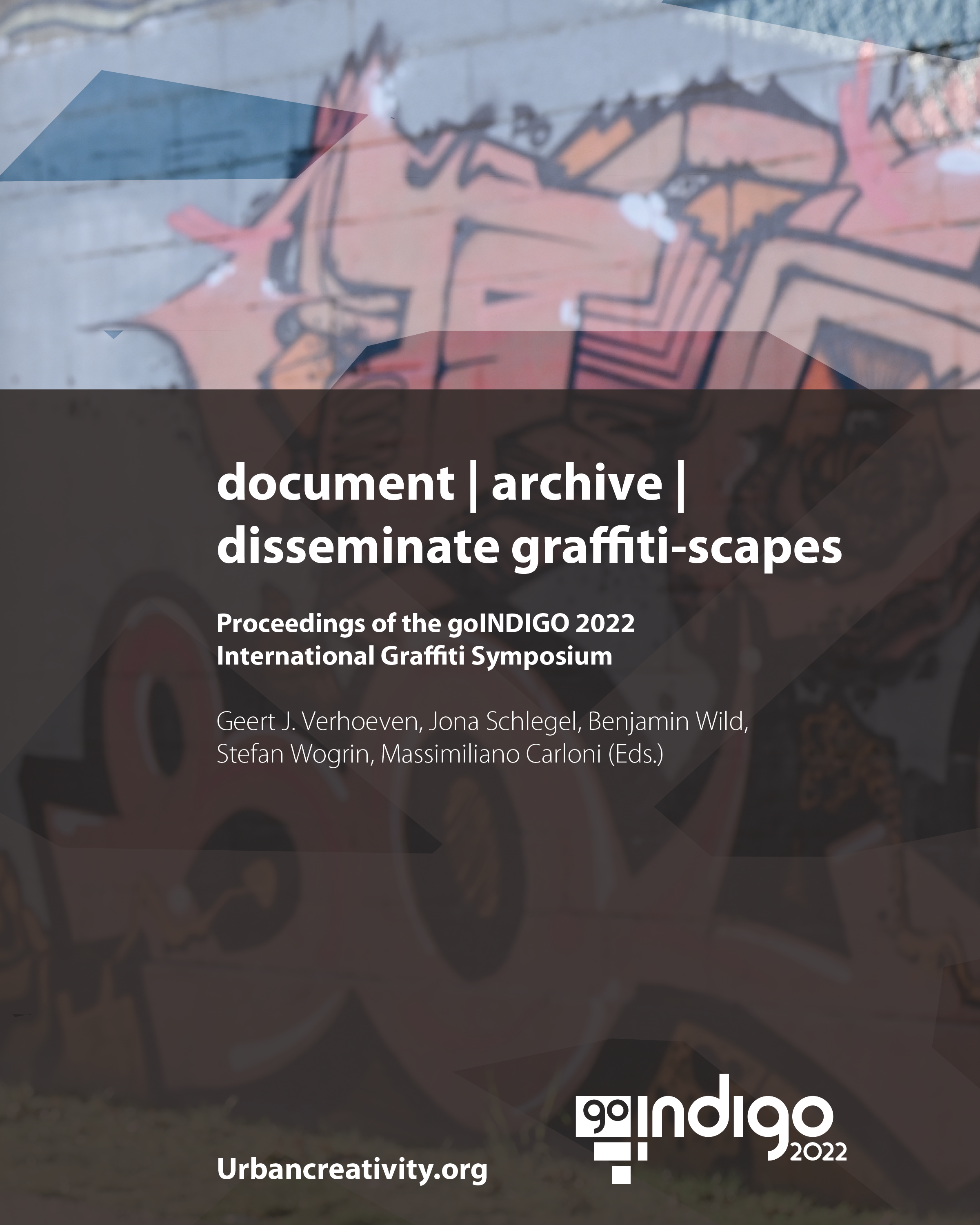Conservation of Graffiti
Ethics and Practices
DOI:
https://doi.org/10.48619/indigo.v0i0.714Keywords:
conservation, contemporary art, ethics, graffiti, preservation, urban artAbstract
The conservation of contemporary graffiti has been a topic of study scarcely addressed by researchers, practitioners, or the public. Largely, with graffiti being a cultural phenomenon worldwide since the 1970s/80s, the conservation and dissemination of the pieces and murals have always been presented through photographs, in the form of records that allow the collection, admiration and exhibition of what pioneer graffiti writers did, and what later generations have evolved into.
Documentation can maintain the essence of what is seen, but the reality of admiring a piece in the flesh will always go beyond it. Over the years, graffiti writers and followers have tried to maintain certain throw-ups, pieces, and murals in situ, for a multitude of reasons and with different results—some better than others. In other cases, and from the other perspective, simple luck has given the public the opportunity to rediscover and appreciate works thought lost (and many times hidden) at the locations where they were first created. In most of the cases of these rediscovered productions, the condition of the works became unstable and slowly faded until disappearing completely. Nevertheless, many graffiti pieces have become valuable parts of the urban environment. This plays an important role in opening possibilities regarding extending their life and appreciation through conservation. The same tools conservators use on public and private works can be adapted and applied to accomplish a better treatment of contemporary graffiti and urban art.
This paper aims to present the opportunities and limits of graffiti conservation, taking into consideration ethical and respectful approaches and the importance of advocating and extending the conservation practice to the support and understanding of Graffiti as a part of the contemporary art repertoire.


